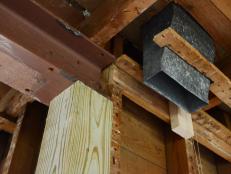How to Eliminate Mold From Every House Surface
Mold spores are all over around us in every type of climate. Mold is fungis and some types are extremely advantageous to humanity (think about penicillin), while others can be rather harmful to crops, breathing systems, and the stability of structures. Dangerous Mold vs. Mildew The most typical kind of mold found in houses is mildew.
Mildew is a surface area mold that grows in warm, wet places like your restroom and on materials and books stored in moist basements. Mildew starts as a gray or white powdery colony. It will turn black or brown if not gotten rid of quickly and typically appears like soil accumulation. To check if the surface is covered with mildew or just dirt, dab the stain with a cotton swab dipped in household chlorine bleach. If the stain lightens or vanishes after two or three minutes, it's mildew. If not, it's most likely just dirt. If you discover a moldy odor anywhere in your house, then you have a high concentration of mold. It can be originating from a hamper filled with damp towels, from a damp crawlspace under your house, or carpets that have mold growing in the cushioning. It's certainly time to take action to eliminate the issue. Now you understand that all mildew is mold but not all molds are mildew.
Mildew can discolor and slowly harm surface areas however there are far more harmful molds that can harm the structure of your house. If you see a black or green mold that is fuzzy or slimy and the drywall or wood beneath is soft or falls apart, there is permanent rot and the mold and the broken surface areas need to be eliminated affidavit of mold assessment and remediation instantly.
Hiring Experts If mildew invasion is caught early, you can quickly handle it with home cleaners.
Warning For substantial mold issues, think about employing a professional. Some molds are extremely hazardous and even less dangerous molds can cause problems for anybody with mold allergic reactions or compromised breathing systems. The general rule is if the mold covers 10 or more square feet, employ a professional. Removing large mold nests needs exposure to heavy-duty chemicals and correct disposal of plagued structure materials.
Local public health departments can provide advice on mold testing and refer you to a specialist mold cleaner.
Products That Eliminate Mold Chlorine bleach: Sodium hypochlorite or regular home bleach works best to ruin mold and eliminate any staining. It is rather severe and ought to be diluted prior to utilizing.
Warning Care must be utilized due to toxicity and harmful fumes and bleach must never be integrated with ammonia.
Hydrogen peroxide: Less harsh than chlorine bleach, hydrogen peroxide (3 to 10 percent option) will eliminate mold and lighten spots. While it does have a whitening effect, it https://www.washingtonpost.com/newssearch/?query=Mold inspection works more slowly than chlorine bleach however has no harmful fumes or residue.
Distilled white vinegar: Vinegar is acidic and gradually breaks down the structure of mold and kills it. Vinegar is non-toxic but mold spots may stay and additional scrubbing with a family cleaner might be needed.
Sodium bicarbonate and borax: Salt bicarbonate (baking soda) and borax each have a high pH that hinders the development and survival of mold. Both items are inexpensive, non-toxic, and easy to blend with water. Borax will work better in getting rid of any sticking around discolorations however not as successfully as a stronger cleansing product. When utilizing any of these items, do not wash away the cleansing service entirely. Leaving a little the cleaner will assist hinder future mold development.
Removal from Fabric If your house has been flooded and mold and germs have been delegated grow for lots of days, it might be difficult to salvage material products. If mildew has actually established due to moisture and is captured early, it can quickly be gotten rid of from most materials. Begin by taking the products outside to brush away as much surface mold as possible and to prevent spreading out the mold spores inside your house. If the material is washable, use the hottest water advised on the care label and include a disinfectant. If stains stay, develop an option of oxygen bleach and water and permit the clothes to soak for a minimum of eight hours.
Oxygen bleach can be utilized securely on any washable fabric. For fabrics that are dry clean only, brush away the mildew outside and then head to a professional cleaner. Recognize and mention the spots and the majority of materials can be effectively brought back.
Leather Shoes, Coats, Accessories, and Furnishings Mold on leather coats, shoes, purses, and furniture should be eliminated outside, if possible. Wipe down the surface area with a fabric dipped in distilled white vinegar and after that with a good leather soap and warm water. Dry with a soft cloth and permit to air dry entirely. When totally dry, deal with the product with a leather conditioner.

Books and Documents Mold will ultimately ruin paper however it can be successfully removed. For costly books and historically significant papers, speak with a professional manager. Never attempt to treat moist paper. The mold will smear and end up being nearly difficult to remove. Allow the paper in books to air dry completely in the sun or location in a sealed container with moisture absorbent material like silica gel or cornstarch sprinkled in between the pages. When the book is dry, head exterior and use a soft paintbrush or cloth to gently brush away the mildew from the cover and each page. Move a sheet of waxed paper under each page to safeguard the page behind it. Slightly dampen a clean, soft fabric with hydrogen peroxide and carefully wipe down each page enabling it to air dry entirely before relocating to the next page.